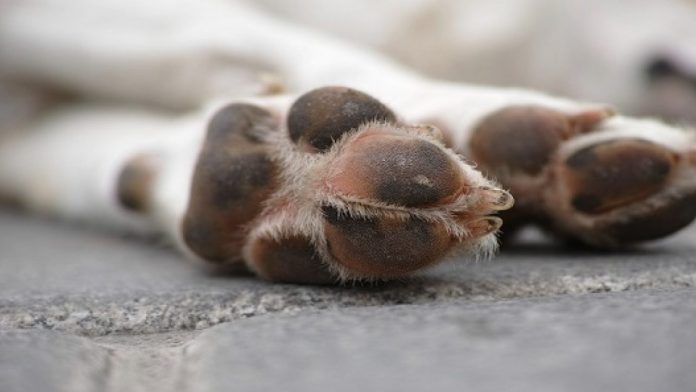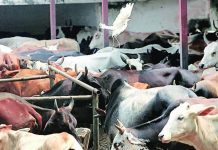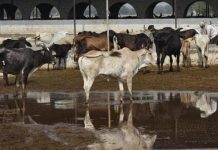This article is written by Abhishek Kurian from National Law University, Odisha. It discusses the effects of uncontrolled breeding of animals, its consequences and laws that protect such actions.
Table of Contents
Introduction
Science has come a long way and has reached a point where we can innovate not just with non-living substances like minerals, electricity, technology etc., but are also able to shape and innovate the animate, or beings that have life.
We all are well aware that animals are bred in captivity for various human purposes. We do so for our own benefits to gain the maximum return from animals. While most of these purposes are for our selfish benefits, when the animals are bred for being pets, there is a chance that even the animals would be benefitted. Although this is, unfortunately, not the case always.
Animals are merely treated as objects and resources that must be spent and exploited till their limit. The absence of strict presence and implementation of breeding laws has resulted in many people being able to breed animals who deal with it in a callous and irresponsible manner. They not only deprive these animals of their complete freedom but also mistreat them by keeping them in an unsuitable condition, not providing them with proper amounts of food or exploiting other resources that they can provide like milk, fur, eggs, meat, etc.
Now, the natural question in one’s mind would be how is it that people are getting away with such actions? Isn’t breeding of animals a major component that could affect the environment? Should such activity not be protected by adequate legislation? This article would be answering such questions while describing the evils of irresponsible breeding actions and what the law has to do and say regarding these actions.
Why is the breeding of animals even practised
One might wonder if animal breeding can cause so many problems, is there a real need to even practise large scale breeding? Why not just do away with it?
Well, while large scale animal breeding is an evil according to many animal activists, one has to attest to the fact that it remains to be a necessary activity to serve the needs of the public. There are certain benefits for both animals and humans that are obtained from the breeding of animals. Among the many benefits include:
Animal husbandry
India is a country where agricultural practices are largely prevalent and the practice not only fulfils the employment needs of a person but also the economic and nutrition needs of many. Breeding plays a vital role in agriculture, especially animal husbandry as there is a large scale requirement for animals that could provide with dairy products, eggs, meat, poultry, etc. Such activities require breeding for production of items to fulfil the needs of the population.
Increasing feed efficiency of animals
As discussed before there is a need for the breeding of animals for feeding the masses. This production can be enhanced by increasing the feed efficiency of animals. Feed efficiency is basically the amount of returns that the animals give for each pound of food they eat. Breeders try different methods of feeding, cross-breeding and also make other changes in their environment to increase the feed efficiency of animals.
Experimenting
There are many scientific experiments in the field of genetic engineering that require the different kinds of breeding of animals to study and identify how they react to certain environments and situations. Also, most psychological, biological and medicinal drug tests are usually conducted on animals first before implementing them on humans. This requires a large sample space for which breeding.
Selective breeding
Selective breeding is a method of breeding by which desirable traits can be developed in animals for human purposes. These traits include strength, adaptability to climate, thinker fur, etc. All animals have certain limitations that can be conquered by developing purpose-specific traits in the animals by using selective breeding.
Captive breeding
This is a type of breeding where animals are made to stay captive in a man-made environment that is conducive to breeding. The animals here are mostly the species that are endangered, and its purpose is to increase the number of animals in that species by trying different methods of breeding in animals.
Uncontrolled breeding of animals
Now, we have understood that there are professional breeders who work for the above-mentioned benefits and it is clear that there is an industry that is involved in the breeding of lakhs of animals on a regular basis.
What happens very often is that there are no laws that specifically standardize or monitor such breeding activities. The people who are responsible for these activities are often careless and are not considerate about the animals that they are responsible for. This results in the mal-treatment of animals, with them being subjected to pain, unfavourable conditions and even unnatural reproduction and genetic changes in the species.
Many of these problems can be ceased by just focusing on the proper implementation of the existing laws and also the enactment of certain new laws and policies that would help in controlling the breeding of animals.
Existing laws that govern breeding activities
As mentioned before, the existing legislation that monitors the breeding of animals is relatively new and is not adequate as of yet. But the recent legislation is certainly one step forward by the statutory bodies. Let’s understand the present laws that concern breeding.
Indian Constitution
While there are no explicit provisions governing animal breeding in the Indian Constitution, there are a few provisions that set a base for the protection of animals from human mal-treatment. These include:
Article 48- This article directs the state to organise animal husbandry and agriculture and also take steps for the improvement and preservation of different breeds of domestic animals that give milk(cows, milch, etc.).
Article 48A- Basically this article states that there must be steps taken to protect wildlife and forests.
Article 51A- According to this article, it is the fundamental duty of every citizen to have compassion for all creatures. This essentially means that the citizens must not commit acts that are ruthless or harsh towards animals.
Statutes
There have been different statutes that have been enacted that discuss animal breeding laws in detail. Since this article talks about the breeding of animals, we will only discuss laws that are related to such provisions that govern breeding.
Prevention of Cruelty to Animals Act,1970
The important provisions of this Act include the following:
- Section 4- This Section deals with the establishment of an Animal Welfare Board for the country which would help in protecting the animals from cruel acts of humans. While this is not a law that prohibits any action, it provides for the setting up of such a board that would cover the protection of all animals, regardless of whether they are involved in breeding activities or not.
- Section 10- This Section gives the welfare board the power to make regulations for carrying out its functions.
- Section 11- This Section defines all kinds of cruelty towards animals. This is a very important section and it talks about the different acts which have a huge chance of being prevalent in the process of breeding. Some of these include:
- Beating, torturing or causing any pain to the animal- Often done as a violent means to discipline the animals
- Using for any purpose that the animal is unfit for- Use them for the reproduction of more animals despite their age or inability, by forceful means
- Use of any injurious drugs- Drugs that may prevent animals from making noises, or drugs that can cause hormonal imbalance in the animals for producing more meat/milk. etc.
- Carrying the animals in a manner that causes discomfort or pain to them- When animals are being carried after breeding they may be caged and carried in small, stuffy vehicles.
- Not providing their animals with sufficient food and other supplies.
This section also provides for the penalty for committing any of these acts – A fine ranging from Rs. 10 to Rs.50 and if such an offence is committed again the repeat offender would be liable for a fine for a minimum of Rs.25 and a maximum of Rs.100, or imprisonment for a maximum period of 3 months, and in some cases both.
- Section 14- We had discussed the requirement of breeding for experimental purposes. This provision allows for such experiments that may be conducted for research, study, or discovery of such knowledge that may be useful for protecting/enhancing life.
- Section 15- This section provides for the power to set up committees if needed for specific purposes of animal protection.
- Section 17- This section describes the duty of a committee concerning the experiments of animals, stating that these committees must ensure that the experiments are conducted with due care in a stable environment, animals are not caused pain unless necessary, training on these animals must be avoided as much as possible, etc.
- Section 19- Under this section, power is given to the committees by which they can prohibit any experiments conducted if it is found that it is not conducted with proper measures and standards.
- Section 20- Under this section, if there is a breach of Section 19, the person in charge of the experiment would be held guilty and there can be a penalty of a maximum of Rs 200 imposed on the person responsible for such contravention.
As discussed under Section 17 of the PCA, there is a provision for setting up of committees to monitor the experiments on animals. This provision has resulted in many rules that have benefitted the protection of animals involved in breeding activities.
Breeding of and Experiments on Animals (Control and Supervision) Rules, 1998
The Breeding of and Experiments on Animals(Control and Supervision) Rules, has provisions that have definitely helped in keeping a check on the breeding of animals and the experiments that are conducted on them by standardising the institutions that carry such actions. Some of the most important and useful provisions include :
- Section 3 and Section 4- There must be proper registration of an establishment or organisation that carries out such breeding activities, and no such breeder could carry out any experiments or breeding activities without the required registration.
- Section 7- This section is very important as it mandates the measures that are to be taken for animal care and stocking of animals-
- The animal houses must be clean and must be protected from pollution, traffic and any extreme weather conditions that are not suitable for the animals.
- The cages or rooms for animals must be spacious and not overcrowded, and should meet the standard requirements.
- Animals must be looked after by trained and experienced attendants at all times including off days and hours.
- Section 9- It deals with the performance of experiments stating that there must be due care and humanity practised during the performance of experiments and the animals must not suffer during the experiments. If any animal has been caused irreparable suffering there are provisions for killing them painlessly.
- Section 13- This deals with the setup of an Animal Ethics Committee which would consist of a scientist, a veterinarian, a socially aware member and a few others who would help in reviewing the projects and experiments that are undertaken by the institutions.
Prevention of Cruelty to Animals (Dog Breeding and Marketing) Rules, 2017
These rules are specific to dog breeding. The provisions under this definitely have a huge role to play in setting decent standards for the breeding and keeping of dogs. Some of the important and relevant provisions are discussed below:
The Act most importantly takes care of all necessary procedural details that would be required for effective management and monitoring of the dogs that are involved in breeding.
Section 8- This section puts forward conditions for dogs to be sold:
- Pups younger than 8 years must not be sold
- The breeder must ensure that the pups are sold to registered and licensed purchasers.
- The dogs and pups must be given required vaccination and medication before selling.
Section 6- All breeders must satisfy the conditions given in the Second Schedule of the Act. The Second Schedule talks about the various facilities and requirements that must be fulfilled by all breeders. It includes:
- Suitable accommodation and housing that is clean, spacious, ventilated, well-lit, etc.
- Adequate food, clean water to drink and exercise facilities.
- The breeders must be aware of nutrition, reproduction, wellness and behavioural development
- There should be no unethical breeding practices followed like forceful reproduction.
- Female dogs should not be forced to produce more than 5 pups in their lifespan and males should be more than 18 months old, mature and ready for mating.
- A very important condition of breeding is regarding mating-
- Only mating of those dogs must be allowed which are either not related to each other or are marginally related to each other. Such breeding practices are known as outbreeding and line-breeding. This is done to avoid any hereditary diseases.
- There must be no mating between dogs who are related to each other in any way, such as inbreeding and incest breeding.
- There must be a veterinary practitioner engaged with the breeding establishment at all times.
- Dogs must not be euthanised if they are not capable of mating anymore.
Suggestions
All the Acts that have been discussed cover many aspects of breeding that would ensure safe and effective breeding. Upon close reading of the Acts, one will realise that the laws that have been enacted are adequate to safeguard the animals from any harsh or painful practices.
So now, what needs to be focussed on is their effective implementation. There must be bodies to ensure the strict implementation of the rules of these statutes and also the penalties that are listed in the statutes.
Also, a few rules followed in other countries could be implemented, such as the “28 Hour Law” which ensures that any person who is carrying animals for long durations must stop after every 28 hours to provide the animals with food and water and also allow them some movement and exercise.
Commercial breeding laws could be strengthened as well, and the example of the US could be followed in which every State takes certain steps to establish clear guidelines and laws for breeding. These laws mandate inspection from time to time for especially those breeders who have more than 50 dogs.
Conclusion
Animals must be treated with compassion, and humans using them for their benefits must have a limit to their selfish activities. Animals are intelligent creatures and they can often feel pain to a greater extent than humans. Humans must take measures to not indulge in unethical and unnatural forms of breeding.
This article must have covered certain laws that most people are not aware of and should have satisfied many animal activists and enthusiasts. But this lack of awareness could be present among officials also and hence there is a dire need for effective implementation of these laws and awareness about it.
References
- http://www.awbi.in/policy_acts_rules.html
- https://www.britannica.com/science/animal-breeding/Breeding#ref273119
- https://www.four-paws.org/campaigns-topics/topics/companion-animals/breeding-of-dogs-with-genetic-disorders/animal-welfare-laws-on-the-breeding-of-animals-with-genetic-disorders
- http://awbi.in/awbi-pdf/Dog%20Breeding%20and%20Marketing%20English.pdf
- http://cpcsea.nic.in/WriteReadData/userfiles/file/1998.pdf
LawSikho has created a telegram group for exchanging legal knowledge, referrals and various opportunities. You can click on this link and join:












